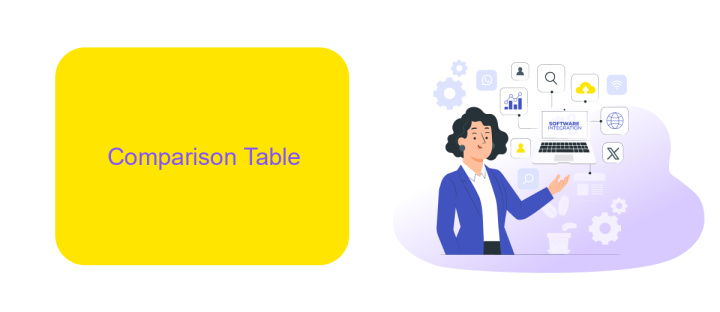Camel Vs MuleSoft
In today's rapidly evolving digital landscape, integrating diverse systems and applications is crucial for business success. Apache Camel and MuleSoft are two prominent integration platforms that facilitate seamless connectivity across various technologies. This article delves into a comparative analysis of Camel and MuleSoft, exploring their features, strengths, and use cases to help organizations make informed decisions in their integration strategy.
Introduction
In the realm of enterprise integration, choosing the right tool can significantly impact the efficiency and scalability of your systems. Camel and MuleSoft are two popular integration platforms that offer robust solutions for connecting disparate systems, applications, and data sources. Understanding their differences and unique features is crucial for making an informed decision.
- Apache Camel: An open-source integration framework that uses Enterprise Integration Patterns (EIPs) to facilitate routing and mediation rules.
- MuleSoft: A comprehensive integration platform that offers API management, data transformation, and connectivity solutions through its Anypoint Platform.
- ApiX-Drive: A versatile service that simplifies integration processes, allowing you to connect various applications without extensive coding knowledge.
Both Camel and MuleSoft have their strengths and are suitable for different use cases. While Camel is favored for its lightweight and flexible nature, MuleSoft provides a more extensive suite of tools for enterprise-level integrations. By leveraging platforms like ApiX-Drive, businesses can further streamline their integration efforts, ensuring seamless connectivity across their digital ecosystem.
Comparison Table

When comparing Camel and MuleSoft, it's essential to consider their integration capabilities. Camel is an open-source integration framework that provides a wide range of components for various protocols and data formats. It is highly flexible and allows developers to define routing and mediation rules using Java or XML. However, it requires a deep understanding of coding and integration patterns, which can be a steep learning curve for beginners.
On the other hand, MuleSoft offers an enterprise-level integration platform known as Anypoint Platform. It provides a comprehensive suite of tools for building, deploying, and managing APIs and integrations. MuleSoft's visual design environment simplifies the integration process, making it accessible for users with varying technical expertise. Additionally, services like ApiX-Drive can further streamline integration tasks by offering pre-built connectors and automated workflows, enhancing productivity and reducing manual effort. This makes MuleSoft a more user-friendly option for organizations looking for a robust and scalable integration solution.
Features and Functionality

Camel and MuleSoft are both powerful integration platforms, each with its own unique features and functionalities. Camel is known for its lightweight, versatile nature and is highly favored for its seamless routing and mediation rules. MuleSoft, on the other hand, offers a more comprehensive suite with robust tools for API management and integration.
- Camel: Supports a wide range of protocols and data formats, making it highly adaptable to various integration scenarios.
- MuleSoft: Provides a unified platform for building and managing APIs, integrations, and microservices with advanced analytics and monitoring tools.
- ApiX-Drive: Facilitates the automation of integrations between different services and applications, streamlining workflows without requiring extensive coding knowledge.
While Camel excels in its flexibility and ease of use for developers familiar with Java, MuleSoft stands out with its extensive capabilities for enterprise-level integration projects. ApiX-Drive complements these platforms by offering an intuitive interface for setting up integrations, further simplifying the process for businesses aiming to optimize their digital ecosystems.
Use Cases and Applications

Apache Camel and MuleSoft are widely used for different integration scenarios, each offering unique capabilities. Camel is often chosen for its lightweight nature and flexibility in integrating various systems through Enterprise Integration Patterns (EIPs). MuleSoft, on the other hand, is preferred for its robust, enterprise-level features and comprehensive API management capabilities.
One of the primary use cases for Camel is in microservices architecture, where it helps in routing and transforming data between services. MuleSoft excels in large-scale enterprise environments where complex integrations and API management are crucial. Both tools can be used to streamline business processes and improve data flow across multiple platforms.
- Microservices integration
- Enterprise API management
- Data transformation and routing
- Legacy system integration
- Cloud service orchestration
For businesses looking to simplify their integration processes, services like ApiX-Drive can be invaluable. ApiX-Drive offers a user-friendly platform for setting up integrations without extensive coding, making it easier to connect various applications and automate workflows. This can complement the capabilities of both Camel and MuleSoft, providing a more streamlined approach to integration.
Conclusion
When comparing Camel and MuleSoft, it's evident that both integration platforms have their unique strengths and weaknesses. Camel is an open-source solution that offers flexibility and extensive customization options, making it a preferred choice for developers who require control over their integration processes. On the other hand, MuleSoft provides a robust, enterprise-grade platform with a user-friendly interface, which simplifies the integration process for businesses of all sizes.
Ultimately, the choice between Camel and MuleSoft depends on the specific needs and resources of your organization. For those seeking a more straightforward, no-code integration solution, tools like ApiX-Drive can be an excellent alternative. ApiX-Drive allows for seamless integration of various applications without the need for extensive technical expertise, making it an ideal option for businesses looking to streamline their operations efficiently. In conclusion, whether you choose Camel, MuleSoft, or another integration tool, it's essential to evaluate your requirements carefully to select the best fit for your integration needs.


FAQ
What are the main differences between Camel and MuleSoft?
Which is easier to learn for beginners, Camel or MuleSoft?
Can Camel and MuleSoft be used together?
How do the costs compare between Camel and MuleSoft?
Are there any third-party services that can help with the implementation of Camel or MuleSoft?
Routine tasks take a lot of time from employees? Do they burn out, do not have enough working day for the main duties and important things? Do you understand that the only way out of this situation in modern realities is automation? Try Apix-Drive for free and make sure that the online connector in 5 minutes of setting up integration will remove a significant part of the routine from your life and free up time for you and your employees.

